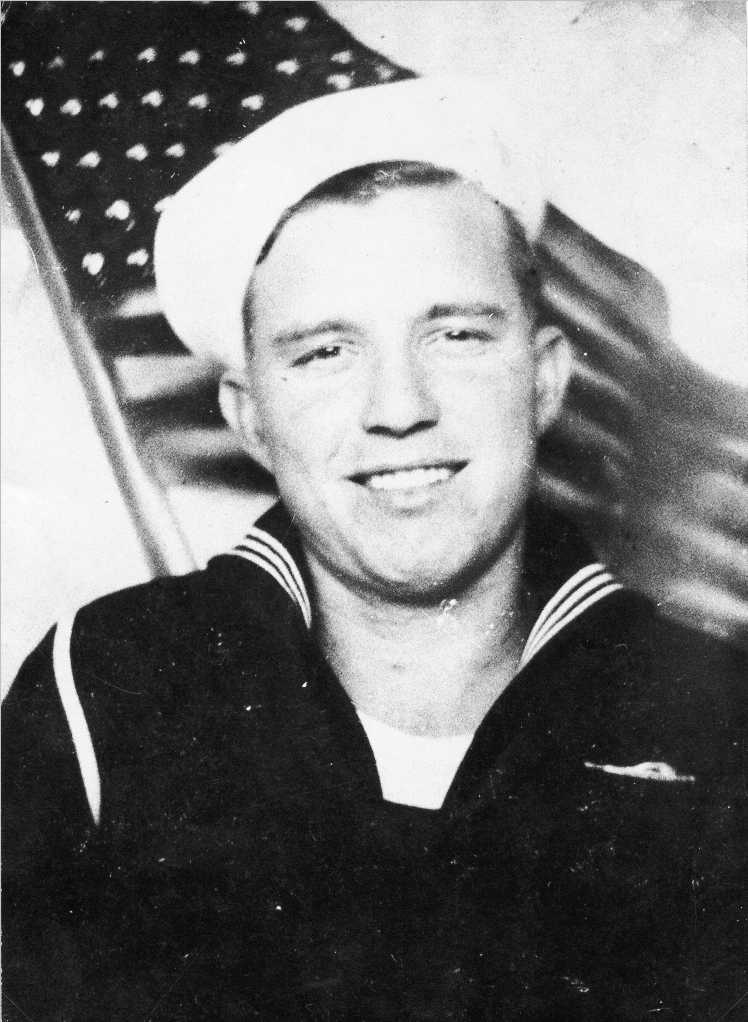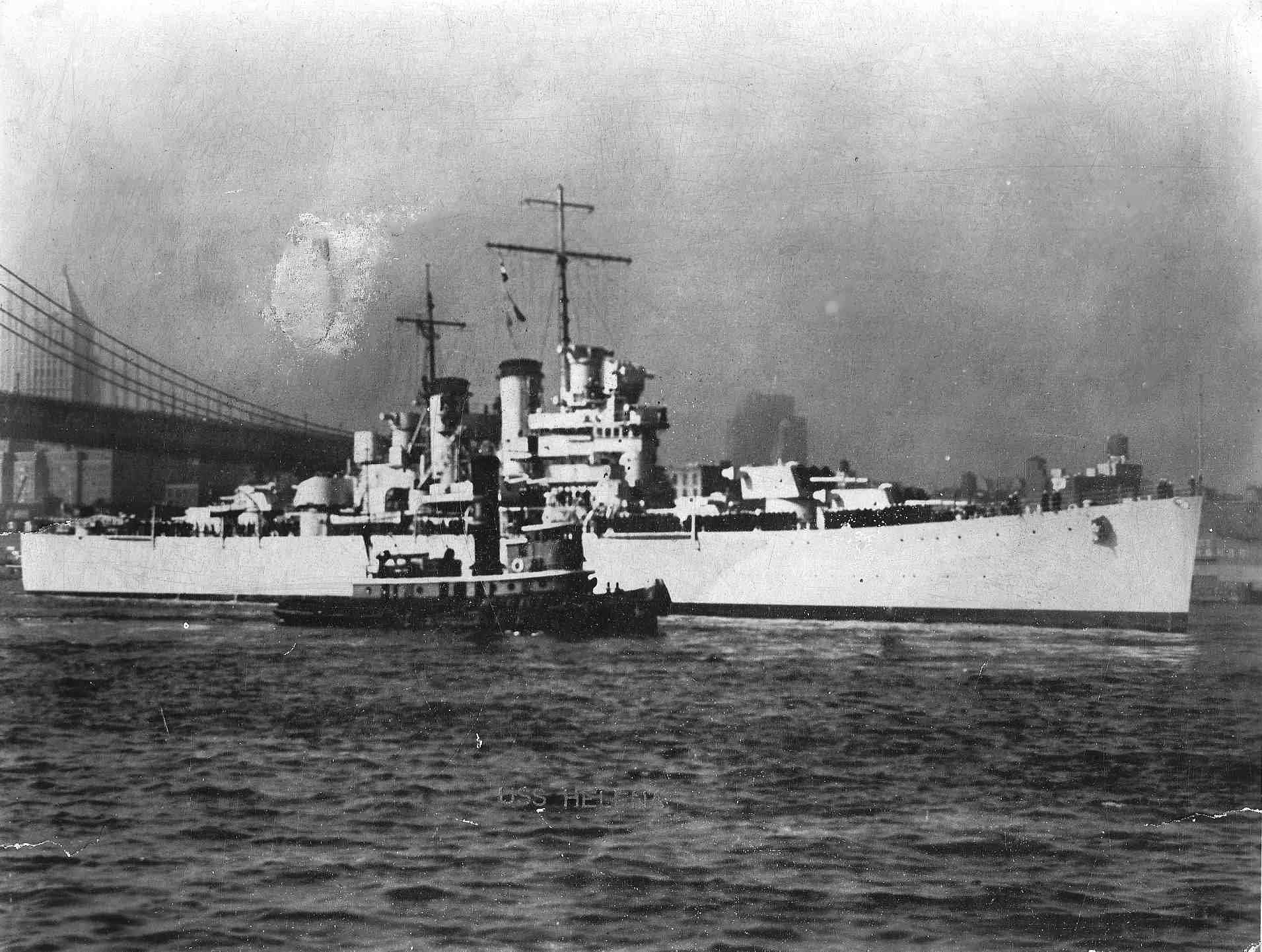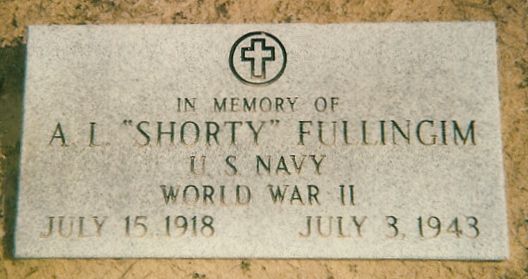As a gunner Shorty fought in thirteen engagements in the Southwest Pacific aboard the U.S.S. Helena before three Japanese torpedo hits sent his ship to the bottom at the outset of a brilliant American naval victory, the Battle of Kula Gulf, Solomon Islands, during which nine Japanese warships turned into flame-swept, sinking wrecks, and five others were badly battered.
At 1:55 a.m. Tuesday, July 6, 1943, the battle commenced with the "Tokyo Express." The Helena's main battery fired on one of the larger enemy ships, sinking it. The secondary battery fired on a destroyer and sank it, shifting immediately to another destroyer and sinking it. Both main and secondary batteries had inflicted damage on two enemy ships when Japanese destroyers closed in and launched a torpedo attack Three torpedoes crashed into the Helena's hull--two in almost the same spot. The ship broke in half and went down twenty minutes later. A letter from a shipmate to his parents assured them that Shorty was able to get off the ship into the diesel oil-covered water, but sadly he was never rescued and was officially declared "missing following action" on July 23, 1943.
A.L. Fullingim was posthumously awarded the Order of the Purple Heart "for military merit and for wounds received in action resulting in his death," on February 11, 1945. A memorial marker was placed in the Hall Cemetery, Antlers, Oklahoma, a number of years later by family members.
Unbeknown to the family was the fact that a memorial marker (cenotaph) had been erected back in 1948 for "S1 A L Fullingim" in the Manila American Cemetery and Memorial, located in Fort Bonifacio, Taguig City, Manila, Philippines. This cemetery has the largest number of graves of any cemetery in the U.S. for military personnel who lost their lives during WWII—holding 17,206 war dead from the Philippines and other allied nations. Many of the personnel whose remains are interred or represented (i.e., vis-a-vis, cenotaphs) were killed in New Guinea/Solomon Islands, or during the Battle of the Philippines (1941-42), or the Allied recapture of the islands.
As a gunner Shorty fought in thirteen engagements in the Southwest Pacific aboard the U.S.S. Helena before three Japanese torpedo hits sent his ship to the bottom at the outset of a brilliant American naval victory, the Battle of Kula Gulf, Solomon Islands, during which nine Japanese warships turned into flame-swept, sinking wrecks, and five others were badly battered.
At 1:55 a.m. Tuesday, July 6, 1943, the battle commenced with the "Tokyo Express." The Helena's main battery fired on one of the larger enemy ships, sinking it. The secondary battery fired on a destroyer and sank it, shifting immediately to another destroyer and sinking it. Both main and secondary batteries had inflicted damage on two enemy ships when Japanese destroyers closed in and launched a torpedo attack Three torpedoes crashed into the Helena's hull--two in almost the same spot. The ship broke in half and went down twenty minutes later. A letter from a shipmate to his parents assured them that Shorty was able to get off the ship into the diesel oil-covered water, but sadly he was never rescued and was officially declared "missing following action" on July 23, 1943.
A.L. Fullingim was posthumously awarded the Order of the Purple Heart "for military merit and for wounds received in action resulting in his death," on February 11, 1945. A memorial marker was placed in the Hall Cemetery, Antlers, Oklahoma, a number of years later by family members.
Unbeknown to the family was the fact that a memorial marker (cenotaph) had been erected back in 1948 for "S1 A L Fullingim" in the Manila American Cemetery and Memorial, located in Fort Bonifacio, Taguig City, Manila, Philippines. This cemetery has the largest number of graves of any cemetery in the U.S. for military personnel who lost their lives during WWII—holding 17,206 war dead from the Philippines and other allied nations. Many of the personnel whose remains are interred or represented (i.e., vis-a-vis, cenotaphs) were killed in New Guinea/Solomon Islands, or during the Battle of the Philippines (1941-42), or the Allied recapture of the islands.
Gravesite Details
Memorial stone is in excellent condition; was set only in the 1970s.
Family Members
Sponsored by Ancestry
Advertisement
Explore more
Sponsored by Ancestry
Advertisement










